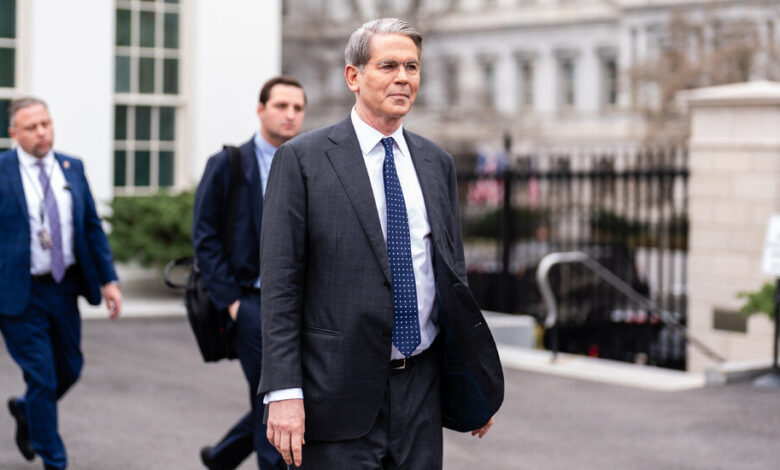US and China Meet for First Time Since Trump Imposed Tariffs

Following a day of high-stakes negotiations in Geneva, top economic officials from the United States and China are gearing up for a crucial second day of talks on Sunday. These discussions could have a profound impact on the global economy, which has been rocked by President Trump’s trade war.
While neither side has released an official statement on the outcome of the talks, President Trump took to social media to describe the meeting as “very good” and conducted in a “friendly, but constructive, manner.” He expressed optimism about the progress made during the discussions and the potential for a reset in the relationship between the two economic powerhouses.
The ongoing trade dispute, which has seen escalating tariffs imposed by both countries, has disrupted global trade and raised concerns about a possible economic downturn. The current negotiations are the first since the imposition of these tariffs and are seen as a critical opportunity to find a way forward.
Despite the high stakes, there is a sense of caution regarding the potential for a significant breakthrough in reducing tariffs. The discussions are expected to focus on clarifying each side’s objectives and exploring possibilities for future negotiations.
However, the fact that the two countries are engaging in dialogue has raised hopes for a de-escalation of tensions and a possible reduction in tariffs. The global economic impact of the current trade situation is already being felt, with supply chains being reconfigured and businesses facing increased costs that may be passed on to consumers.
Economists and investors are closely monitoring the negotiations, concerned about the potential consequences of a prolonged U.S.-China economic conflict. Businesses that rely on Chinese imports are particularly anxious about the outcome of the talks and how they will navigate the uncertainty created by the tariffs.
While a lasting resolution may not be imminent, the initiation of high-level discussions between the two sides is seen as a positive step towards easing tensions and avoiding further economic hostilities.
The U.S. delegation, led by Treasury Secretary Scott Bessent, is advocating for a reduction in tariffs, citing their damaging impact on the economy. The Chinese side, represented by He Lifeng, is engaging in discussions to address the concerns raised by the U.S. and explore potential areas of agreement.
The trade dispute has already taken a toll on both economies, with China reporting a significant drop in exports to the U.S. and U.S. companies facing higher costs due to the tariffs. President Trump has signaled a willingness to lower tariffs, emphasizing the need to strike a favorable deal for America.
As the negotiations continue, the focus is on finding common ground and moving towards a more sustainable economic relationship between the two countries.
The Trump administration has accused China of unfair trade practices and has called for greater cooperation on issues such as fentanyl trafficking. China, however, maintains that it is open to negotiations but will not make concessions under threat or pressure.
The prospect of reducing tariffs, even to 80 percent, is seen as a significant step towards easing trade tensions, although challenges remain in reaching a comprehensive agreement.
Both sides are aware of the potential consequences of a prolonged trade conflict and are working towards finding a mutually beneficial solution that addresses their respective concerns.
Experts suggest that scaling back tariffs to previous levels could pave the way for more constructive negotiations and help build trust between the two countries.
Reducing tariffs to pre-conflict levels could signal a positive shift in the negotiations and create an opportunity for more productive discussions.
Both sides are prepared to address key issues such as fentanyl trafficking and are open to exploring solutions that benefit both countries.
The talks are being closely watched by the international community, with hopes that a resolution can be reached to avoid further escalation of the trade conflict.
The potential consequences of a prolonged trade conflict between the U.S. and China are significant, with implications for global supply chains and consumer prices.
The National Retail Federation has warned of possible shortages and price increases resulting from the tariffs, highlighting the impact on consumers and businesses.
As negotiations continue, there is growing pressure on both sides to find a resolution that mitigates the economic fallout and ensures a stable trade relationship.
Economic analysts are hopeful that a reduction in tariffs could help boost economic growth and mitigate inflationary pressures.
The willingness of both countries to engage in negotiations and explore potential solutions is seen as a positive step towards resolving the trade dispute.
As the discussions progress, there is optimism that a mutually beneficial agreement can be reached to address the concerns of both parties and pave the way for a more stable economic relationship.





